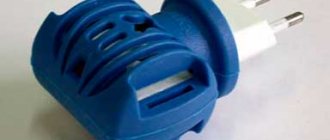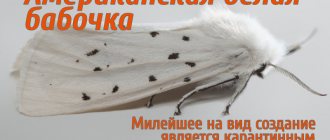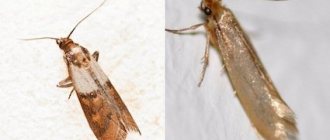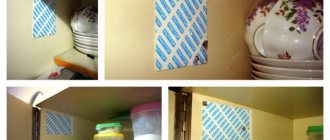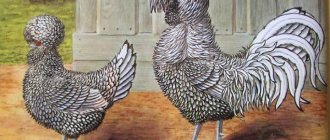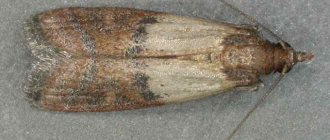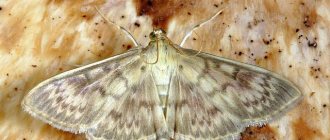Valenki are shoes made from felted sheep's wool, which provide great warmth in the bitter cold. This bright element of Russian clothing is no less fashionable today than in the last century. Modern models of felt boots look much more elegant and can be decorated with various patterns and rhinestones. Therefore, the questions of how to store and how to clean felt boots from moths are no less relevant today and concern every owner of such winter shoes. In order for felt boots to last longer, warming your feet, you need to properly care for and store them.
How to store felt boots in summer
- Before you hide your shoes for the summer, you need to dry them thoroughly . In hot weather, you can expose them to the sun for several days. It is important to dry your shoes on all sides.
- Then clean off all the dirt and brush over the entire surface.
- Pack according to all rules to protect against moths.
- Place in a dry and warm place . You can easily store felt boots in your apartment. A pantry or dressing room is perfect for such purposes. You can store them on the balcony, but avoid direct exposure to direct sunlight. If you have a spacious hallway, you can put your shoes there.
- Dampness and humidity are unacceptable . The felt boots will become damp and lose their shape.
A little about the pest
The wool or fur moth is a small white-yellow butterfly. This insect got its name due to the predominance of wool and downy fibers in the diet of their larvae.
That is, a material that can be found in the home in the form of clothing and shoes made from wool.
These are butterflies up to 5-8 mm long, with a wingspan of up to 1.5 cm. It must be said that adult individuals themselves do not pose a danger to your wardrobe.
But they must be destroyed in order to prevent the laying and spread of eggs of these insects in the house.
It is the larvae that are dangerous, feeding on wool fibers and leading to damage to clothes and shoes.
Fur moth larvae are completely white, about 1 cm in length when they grow up. One female can lay up to 200 eggs in several groups in different places.
How to store felt boots in winter
- In snowy weather, after going outside, you must first remove the snow from your shoes . This will prevent the boots from getting wet and swelling under the influence of moisture.
- Place to dry naturally next to heat sources - radiator, stove. But it is forbidden to place felt boots on heating devices, radiators, or directly next to the fire. The shoes will lose their shape.
- When drying, you need to put newspaper or paper inside . They will absorb all the moisture and facilitate quick drying.
- In damp and humid weather outside, you should wear rubber galoshes . They protect against getting wet, dirty, and damp.
- Galoshes can severely rub the heel of shoes until holes form. To avoid this, you need to sew rubber or leather linings , which will prevent the material from deteriorating.
- If galoshes are unacceptable for you, then you should attach a thick felt pad or rubber sole . They will protect felt boots from dampness, moisture, water and dirt.
Interesting points
- The moth tries to hide and not show itself. She leads a sedentary lifestyle. She eats felt boots, starting from the top. If the shoes have leather or other inserts, they will remain intact. Carpet beetles, which are often confused with moths, on the contrary, actively bite into the leather base.
- Under natural conditions, moths eat feathers and animal hairs. There are types of parasites that live in the antlers of antelopes. They chew them right out from the inside. It is not surprising that the insect digests felt well.
- The main sign of the presence of a pest is caterpillars and butterflies in the closet or on felt boots. If the shoes are with the moth for a long time, it is unlikely to be saved.
Moths eat felt boots, starting from the top. If the shoes have leather or other inserts, they will remain intact
How to protect felt boots from moths
These insects are very fond of woolen products. Felt boots are no exception. It is necessary to protect shoes from moths during the spring and summer. Otherwise, by winter you will receive a damaged product.
- It is recommended to dry the boots thoroughly and remove dirt and dust.
- Put moth repellent . You can use store-bought or folk remedies. A sprig of wormwood, lavender, bay leaf, mint will do - they repel these insects.
- Then carefully wrap each boot in newspaper or paper . You can use a more modern way - buy shoe covers. There are special storage cases made from natural materials impregnated against insects. This is very convenient and reduces the time it takes to prepare shoes for storage.
- Periodically remove and check for insects . If necessary, you can dry it again and change the paper.
- Should be stored in a dry place , avoiding dark and damp areas. Moths do not like bright sunlight.
- If moths or their larvae are found during regular checks, you should remove them, expose them to frost or sun for several days, depending on the time of year, and repack them in new paper.
It is important to detect insects and their larvae in time, because they can cause irreparable harm. The material will be damaged and cannot be restored.
We use galoshes
Galoshes are especially necessary in wet weather. They will protect pure wool shoes from dirt and moisture. Otherwise, after getting wet, the felt boots will have to be dried, as a result of which the product may shrink. It also encourages the appearance of moths.
Many modern felt boots, stylized as women's boots, are now equipped with vulcanized rubber soles. And the presence of decorative leather inserts helps protect shoes from slush.
Felt boots
What to do if a moth eats your fur coat?
25 Dec 2018
After you have bought a fur coat, you should take care of its safety. Often, moths appear in fur products, which cause irreparable damage to things. You can protect clothes from insects if you follow storage rules and periodically inspect the fur. But what to do when the insect has already started? Read about this in the article.
How can you tell if there are moths in your house?
The eggs of the pest are very difficult to detect: their length is no more than half a centimeter, and their color is translucent. After a week, moth larvae are born from the eggs, which cause damage to the fur. They eat only the fur, leaving the skin behind. For this reason, bald spots appear. From them you can understand that the fur coat has new owners.
There are also indicators of damaged wool:
the fur has lost its attractiveness, lumps have formed;
“cut” fur appeared under the fur coat;
folds have formed that were not there before;
the presence of clipped paths;
Adult moths move around the apartment.
If you notice one of these signs, you should take action immediately, otherwise the clothes will no longer be salvageable.
Features of the fur moth
The fur moth is a clay-colored winged insect. Outwardly, it looks like a butterfly, but the fur lover is distinguished by the absence of a proboscis.
Moth larvae are small translucent caterpillars. They live for about 10 months and feed on keratin found in wool. The larvae also chew through any fur that gets in their way. If there are particles of dirt and sweat left on your fur coat, this will certainly attract insects.
A moth (adult) emerges from the larvae. She cannot digest food, so the fur suffers only from moth larvae. However, the moth lays a large number of eggs (about 12 eggs per hour). An adult lives for a month, during which time a whole colony of pests forms in your clothes. Therefore, when putting away a fur coat until the next winter season, it must be thoroughly cleaned.
Where do moths come from?
Sometimes fur coats in stores are sold already with moths. This is the most common reason for insects to appear in the house. Even purchasing items from expensive stores does not exclude the possibility that the clothes will not contain pest larvae. However, the insect prefers used items, so buying a used fur coat is a risky business; This kind of thing requires careful checking.
Wherever you buy your outerwear, don't immediately put it in your closet. Let it hang on a balcony or other warm or cold room for 2-3 days. Moth larvae cannot tolerate low and high temperatures, so they die in such conditions.
A fur pest can appear not only with a fur coat: be careful when purchasing carpets, furniture and woolen clothes.
In rare cases, fur moths enter the house with the dog. It does not parasitize animals, but can use them as a temporary shelter. If your pet has short hair, there is nothing to worry about: the insect only chooses dogs with long hair.
How to fight moths?
If you notice a winged fur lover, then don’t hesitate for a minute, because at stake is an expensive product that can still be saved.
Insect control methods
Not every person knows whether a moth is afraid of frost when it is not hibernating. An adult butterfly while awake can die outdoors at temperatures below -2°C. But moth larvae, pupae and eggs die at temperatures of 10 degrees below zero. High temperatures are also critical for insects. At temperatures above 40 degrees Celsius, moth larvae and adult butterflies die.
The effect of cold on moths
Effects of cold on pests
If an adult specimen or an item damaged by its larvae was found in the closet, immediate action must be taken:
- carefully take clothes and things that could be attacked by pests outside or onto the balcony;
- on the street, thoroughly shake your clothes;
- leave for 4-5 hours in the cold at a temperature below -10°C;
- bring things into a warm place for 2-3 hours, then take them outside again for another 5 hours.
Important!
Even if you know at what temperature moth larvae die, cold treatment alone may not be enough. When the surviving larvae and eggs warm up again in the apartment, they will be more vulnerable. Therefore, in order to get rid of moths in an apartment, a repeated freezing procedure is needed, which guarantees the death of all pests.
Workers in warehouses and large premises where clothing and fur products are stored know that moths are afraid of the cold. They try to ventilate storage areas to prevent flying pests.
The procedure for preparing shoes for storage
Proper care and storage will extend the life of your favorite boots and boots. Before you send your favorite shoes on vacation after a long winter, prepare them as follows:
- Thoroughly clean the products from dust and dirt. Please ensure that the chosen cleaning method, as well as the materials and products applied to the shoes, are suitable for the material from which the product is made:
- Clean suede and nubuck shoes with a rubber brush and a special product (use aerosol foam). Pay special attention to the sole. Wash off all dirt with a soft sponge using special foams or detergent.
- Wash leather shoes with warm water and soap.
- If stains are found on your shoes, remove them with special products.
Important! Stains from suede shoes can be removed with an eraser, and then treat the surface with a special suede product.
- After cleaning and removing stains, wipe the shoes with a clean damp cloth or soft cloth.
- Dry boots and shoes away from open heat.
Important! Place paper inside the shoe so that it quickly absorbs the accumulated moisture inside.
- Remove the insoles (if they are removable) and dry.
- Pay attention to the surface of the leather and the integrity of the heels:
- If necessary, take your boots to a workshop to change the heels or make other minor repairs.
- If the skin is damaged, eliminate the defect using special products. Do this before you put the product into storage.
- If everything is fine with the shoes, apply cream in the form of an emulsion to the surface. The cream will create a thin protective film on the surface of the product and at the same time maintain air circulation.
- For shoes made of suede, velor and nubuck, as well as patent leather, use special products designed for these materials.
- Leave the shoes to dry.
Important! Before storing winter shoes for a long time in the summer, we recommend applying shoe polish and drying the products several times in a row. This is necessary so that the shoes absorb a sufficient amount of cream, which will not allow them to dry out or crack.
- Place special spacers or other means (paper, polystyrene foam, sponge) inside the boots to prevent the boots from deforming.
- Place each pair in a linen bag or cardboard box, lined with cloth or paper.
- Place moth repellent in each box.
Important! Before storing your winter shoes, be sure to get rid of the unpleasant odor inside the product. This problem can be solved with the help of antiseptics or special deodorants. Antiseptic agents are preferable, since they not only eliminate the smell of sweat, but also fight the proliferation of fungi and bacteria.
Helpful Tips:
- Use silica gel for summer storage, which comes with your shoes. Instead of silica gel, which absorbs water vapor well and protects boots from mold and rot, you can use table salt.
- If you store shoes in a box, make holes for ventilation.
- Do not treat dark leather boots or boots with colorless cream, as they will lose their former luster or become dull. Be sure to match the cream to the color of your shoes.
- Use special means for disinfecting shoes, purchased at hardware stores, or use the folk method: place a tampon with vinegar essence inside. Place the treated pair in a plastic bag, tie tightly, and leave for 12 hours for disinfection. Then air the shoes and put them in a box.
Felt boots
First, the felt boots must be thoroughly dried after the snow has melted and the dried dirt must be removed using a brush with stiff bristles. After this, you need to dilute the washing powder with water in a ratio of 1:2, moisten the brush in the solution and treat all contaminated areas with it. Foam should form on the surface of the felt boots; it should be washed off under a gentle stream of cold water.
After wet cleaning, shoes should be dried naturally without using a battery. To prevent the size of felt boots from decreasing, they must be tightly stuffed with crumpled newspapers before drying. Dry the shoes until there are no particles of moisture left inside them.
Why is the pest dangerous?
As already mentioned, adult fur moths are not dangerous for items of clothing, since they do not even have mouthparts adapted to chew through natural fibers.
In addition, adult butterflies live extremely short lives, only a few days, and the purpose of their existence is exclusively reproductive. Once fertilized, the female lays eggs and dies very soon.
But the larvae of these insects are a completely different matter. This crawling little thing can ruin several items in your wardrobe in a short time, which means unforeseen expenses and unnecessary nerves.
It must be said that, even if the larva does not eat an object made of natural material, it tends to gnaw passages in its fibers for ease of movement.
The larvae practically do not touch synthetic material; in search of wool, they can damage book bindings, stuffed animals and thermal insulation materials.
Possibility of moths appearing in an apartment
Clothing bought at second-hand stores can be a source of moths.
Only insects with wings can move independently. But even they are unable to travel long distances. Therefore, a butterfly itself can only fly into an apartment by accident. Other reasons for their appearance are more likely:
- Kitchen insects are found in purchased foods that have already been infested.
- Purchased second-hand clothing can be a breeding ground for these pests.
- Even new items purchased from a reputable store sometimes contain moth larvae.
- The infection can enter the house along with purchased furniture.
- Butterflies enter the apartment through ventilation shafts from a grocery store or clothing warehouse located on the ground floor.
- Insect eggs can end up in pet fur.
Pests will be able to gain a foothold in a new territory if they find suitable conditions - a warm, shaded place with familiar food and the absence of strong odors.
Dark boots
Dark felt requires much less constant cleaning, but sometimes it still needs to be washed. To do this, you can use soap foam, which you need to rub into contaminated areas or treat the entire surface with it. The remaining soap is washed off with cold water, after which the shoes are sent to dry.
In addition, you can use the dry cleaning method; it is suitable for felt or felt boots. You need to rub all the dirt stains with a dried crust of black bread, it will return the material to its previous condition. The remaining crumbs must be removed from the surface with a brush. The dry method is more gentle on the material.


